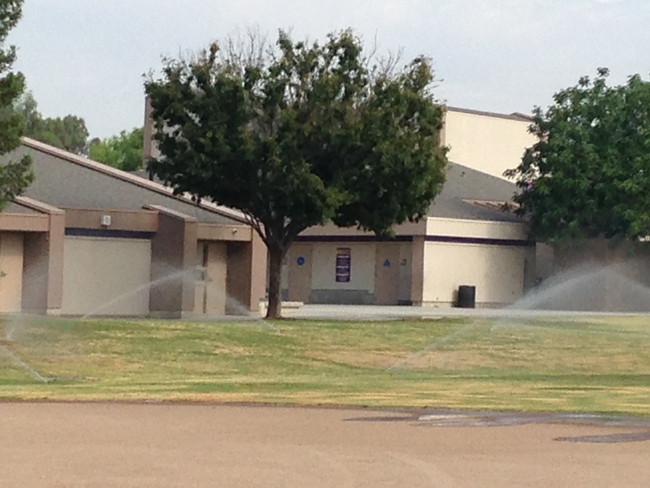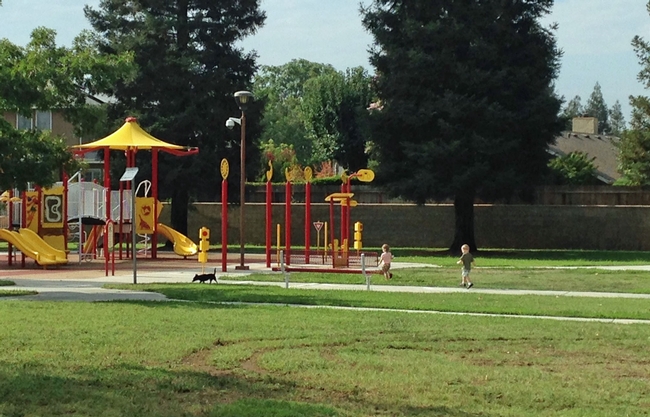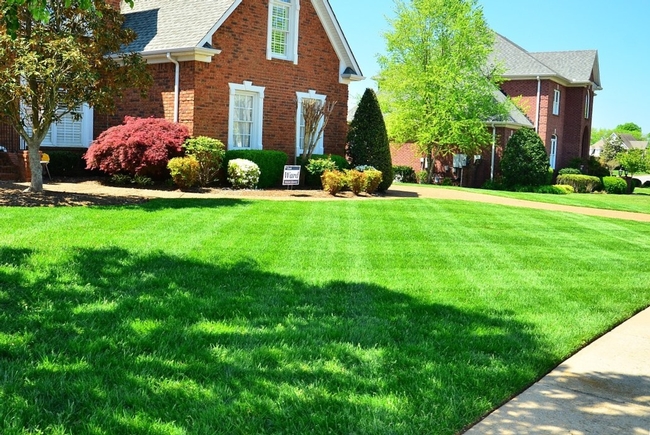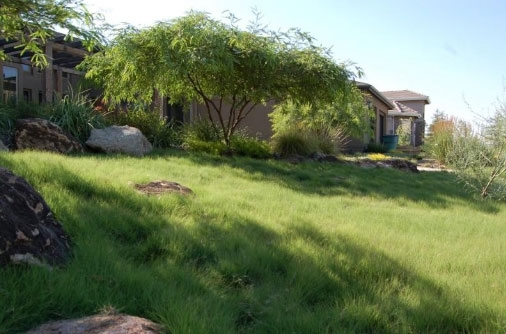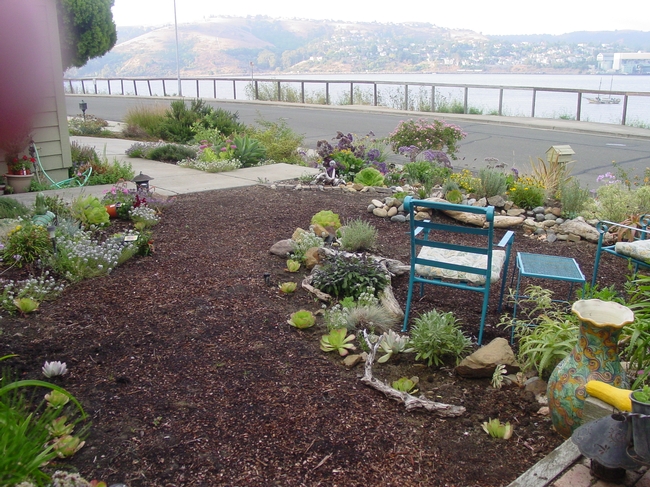Posts Tagged: lawn
Drought concerns causing unnecessary impact on landscapes and lawns
“Landscape plants and the water they use are under unrelenting attack,” says Don Hodel, UC ANR Cooperative Extension advisor in Los Angeles County. “But most of these attacks are misguided when one looks at the facts.”
Hodel and Dennis Pittenger, UC ANR Cooperative Extension area environmental horticulturist in the Department of Botany and Plant Sciences at UC Riverside, wrote a six-page commentary, 9%: The California Drought and Landscape Water Use, with facts about the relatively small amount of California's water that goes into landscapes, and the tremendous benefits to residents, communities and the environment provided by these plants. The article was published in PalmArbor, an electronic journal for the green industry.
“Landscape water use in California accounts for only 9 percent of total statewide water use,” the authors wrote. “Yes, that's right, just 9 percent. If we never watered another home or public landscape, park, sports field, or golf course in California, the state would save 9 percent of its total water consumption.”
Pittenger and Hodel named 12 ways lawns and landscape plants enhance the quality of Californians' lives and make urban areas more livable. Trees, shrubs, groundcovers, lawns and flowers provide:
- Oxygen
- Carbon sequestration to help mitigate global warming
- Rain capture, dust and erosion control
- Shade and energy savings in heating and cooling
- Wildlife habitat
- Food
- Beauty and ornament
- Recreation
- Enhanced property values
- Psychological well-being
- Cultural/historic value
- Jobs and economic value
The authors assert that California cannot conserve its way out of drought by trying to wring out significant water savings from the 9 percent that keeps landscapes alive.
Instead of shutting off the sprinklers, the authors call for “judicious irrigation,” providing just enough water to trees, plants and lawns to keep them alive. The authors believe judicious irrigation may be sufficient by itself to meet the 25 to 35 percent water reductions required by the state without changing the landscape to so-called “low-water use” or “drought-tolerant” plants.
“Most woody plants are actually drought-tolerant and low-water use once they are established and cared for properly,” the article says. “Research over the last 30 years has shown that water-reduction goals can be met while maintaining the quality-of-life benefits that landscape plants and functional lawns provide.”
Hodel and Pittenger also identified three urban water uses that should be considered priorities for outdoor irrigation, even in times of extreme water scarcity.
- Public parks, school play grounds and sports fields. “Children need to play and exercise on grass, not asphalt or dirt,” the article says. “And we all benefit from walking and exercising in a green, pastoral setting.”
- Bona fide botanical gardens and arboreta. “These research collections of plants have immense value,” the authors wrote. “For example, the plant collections at the world-famous San Diego Zoo actually have greater value than the animals.”
- Trees. “Mature trees are among the most valuable and difficult-to-replace plants in urban areas,” the UC ANR experts said. “Their loss would be devastating.
The director of UC ANR's California Institute for Water Resources, Doug Parker, is a spokesperson for the University of California on water issues of statewide importance. He agrees that, in much of the state, urban communities benefit from natural plantings and turf should be a priority for recreation areas.
“It's true that rock gardens, artificial turf and hardscape do not provide much wildlife habitat, carbon sequestration or environmental cooling,” he said. “But in places like Palm Springs, they are appropriate.”
Having worked closely with policymakers, scientists, government organizations and consumers during the past four years of drought, Parker said he has reached the conclusion that Californians cannot build or conserve their way out of periodic droughts.
“What we really need is a change in mindset to learn to live with drought and uncertainty,” Parker said.
Following are free water-conservation publications from UC ANR:
Water conservation tips for the home lawn and garden
By Pamela Geisel, UC ANR Cooperative Extension advisor emeritus
Carolyn Unruh, staff writer
Managing turfgrasses during drought
By Ali Harvandi, UC ANR Cooperative Extension advisor emeritus
Jaimes Baird, UC ANR Cooperative Extension turfgrass specialist, UC Riverside
Janet Hartin, UC ANR Cooperative Extension environmental horticulture advisor, San Bernardino County
'Mow, blow and go' workers another drought casualty
If you take out 5.4 million square feet of turf across Orange County, you save 645 million gallons of water. But you also uproot an entire industry, reported Aaron Orlowski in the Orange County Register.
The reporter spoke to a yard worker who said customers are asking for service once a week, where they used to have it twice a week.
“The grass is starting to die out because they've been told to bring down their watering times. Before, they watered two times a day, four times a week. Now, they only water once a week," the worker said.
But in time, the industry is bound to adjust to a new water-conserving reality, assured Doug Parker, director of the University of California Agriculture and Natural Resources (UC ANR) California Institute for Water Resources.
“Eventually, with redesign and installation, those landscapes will need maintenance as well. So it could be in the long term, those maintenance crews come back to where they were," Parker said. "They may not be mowing as much as they were, but the bushes will still need to be trimmed.”
Other drought news:
Ag woes have big impact on San Joaquin Valley economy
Tim Hearden, Capital Press, May 21, 2015
While agriculture may seem small compared to the entire California economy, it has a big impact on commerce in the San Joaquin Valley, according to Daniel Sumner, director of UC ANR's Agricultural Issues Center. “Statewide, agriculture is 2 percent of the state's economy,” Sumner said. “That's the number, and if agriculture is cut 10 percent, that's two-tenths of 1 percent (of the economy).” But, he adds, “…That doesn't mean it's tiny.” In some communities in western Fresno County, a lack of ag-related jobs because of fallowed acres has led to an unemployment rate of nearly 40 percent.
Green going out of fashion in California
Many Californians are beginning to reluctantly accept that a well-manicured, lush green lawn is no longer a realistic landscape feature in the arid West, reported Steven Kurutz in the New York Times.
Chuck Ingels, UC Cooperative Extension advisor in Sacramento County, told the reporter homeowners with traditional green lawns may soon have no choice but to let them go brown. An average of 50 to 60 percent of a household's water consumption goes to outdoor use, which includes the landscape. He envisions a future in which lawns go dormant in winter and in summer, if watering is not allowed.
“The water bills are going up,” Ingels said. “I think we're going to start seeing more and more people opt for a brown lawn. I think it could become more traditional.”
If some water is available, there are less thirsty alternatives to traditional lawns that can provide a similar effect. Ingels has experimented with meadow-like buffalograss and dune sedge as alternatives. For example, UC Verde buffalograss, released in 2003, was bred for the California climate by UC researchers. It needs only infrequent mowing, uses half the water of tall fescue and is disease and pest resistant.
Other options are drought-tolerant native species like carex and bentgrass. These can be used for the meadow effect if not mowed, or mowed regularly for a more traditional look.
So, How About That Lawn?
This is the perfect time of year to think about your lawn. Once the only thing people planted as a front yard ground cover, the lawn is now being seriously re-considered. A lawn takes a lot of care: regular weed control, periodic feeding and, ideally, de-thatching and aerating once a year. If we use chemical fertilizers, pesticides or herbicides on our lawns, there is almost always some run-off that eventually feeds into the San Francisco Bay. Our gas-powered mowers, de-thatchers and aerators contribute pollution to the air we breathe and the electric ones, naturally, use electricity, thereby adding more carbon to the air. Additionally a lawn takes a lot of water.
According to sustainable landscape designer and Cupertino Master Gardener Deva Luna, lawn mowers account for 5% of air pollution in the United States, (I wonder if that includes the weed-eater and the leaf-blower.) and more than 30% of urban fresh water is used to water lawns. Holy cow! That's a lot of water that we may not continue to have available as the population of our state continues to grow, the climate continues to warm, and aquifers are depleted.
With the goal of encouraging wise water usage and a more-healthy, sustainable landscape, Solano County is continuing its Water-Efficient Landscape Rebate program this year. The Solano County Water Agency is again offering residents a rebate of one dollar per square foot of existing lawn removed and replaced with native and drought-tolerant plants on a drip irrigation system. The County is also offering a Bay Friendly Landscape Workshop, planned for September 14th from 10:00 a.m. to 1:00 p.m. Check the website for details. http://www.solanosaveswater.org/Rebates.html
Lawn removal is a pretty big project. Depending on the type of grass you have there may be a variety of approaches. It may involve sod cutting/scraping and smothering; solarizing the soil; sheet mulching; rototilling; or even just pick and shovel labor. If you are interested you can find a nice "how-to" list at fremontlibraries.wordpress.com/2009/06/05how-to-remove-your-lawn.
You can also check out www.bayfriendlycoalition.org/principles for some good reasons to take out that lawn as well as a list of garden professionals in the Bay Area.
In our family we are beginning the process of removing a Bermuda grass lawn and replacing it with appropriate drought-tolerant perennials, perhaps a small deck, a dry creek bed and a swale to catch rainwater, keeping it on the lot. We'll get our first experience with solarization and hope for a nice warm next six weeks to really toast that grass. Easier care, lower water bills and the knowledge that we are making our planet home a little bit more healthy will surely be worth the effort.
Attached are a few pictures of water-wise yards in our area.
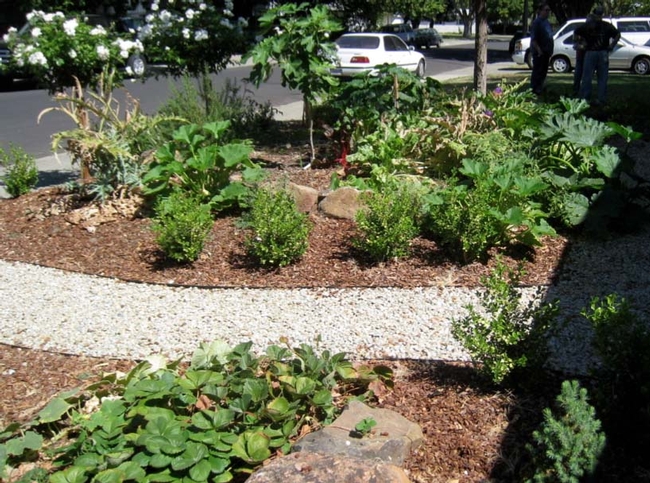
Deodara House. (photos by Marian Chmieleski)
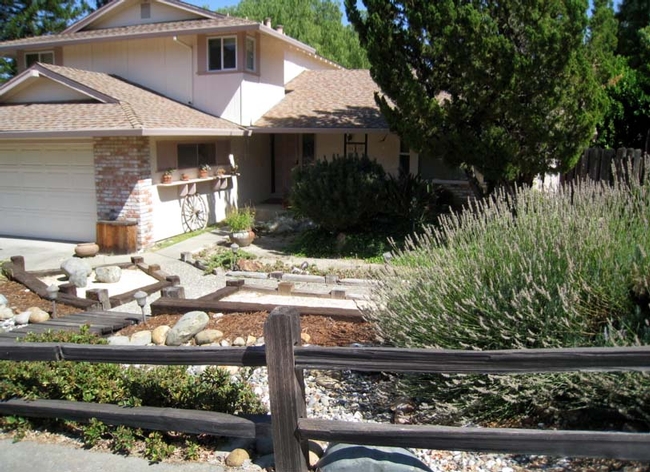
Millward House
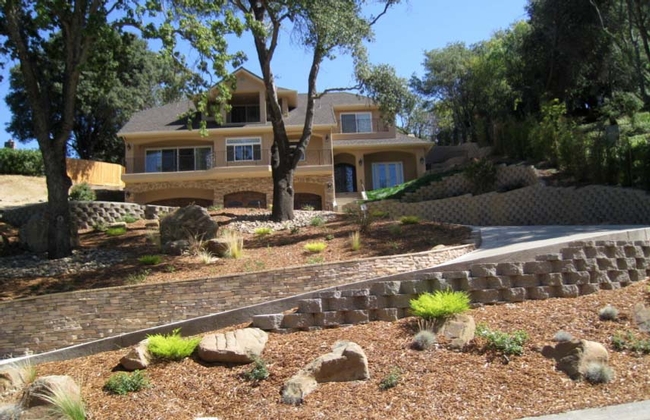
Wykoff House
From Roses to Relaxed-the final part
By 2009 the one remaining lawn is the main lawn with the traditional "need to mow and water" grass from the front door to the sidewalk. We begin planting a little garden next to the house with a row of Erysimum below our living room window. They look very tidy. We add some Euphorbia characias and I find the beautiful yellow blooms against the grey-blue foliage enticing.
During the spring of 2009 I attended a workshop at Solano College given by the Solano County Master Gardeners on the subject of "Propagation". The MG's are friendly and very helpful as they explain some basic how-to's of plant propagation, I'm hooked and submit my application for the Solano Master Gardener's Program 2010 term. As I sit through the series of lectures, I realize there are many options for gardening and soon begin to think seriously about removing the main front lawn and putting in a garden that is more interesting to use, uses much less water and give us a chance to experiment with different plant materials. So it is now 2011 and the rains seem to continue on and on. Finally it is May and our son has relocated nearby. He agrees to remove the sod and we are on our way.


